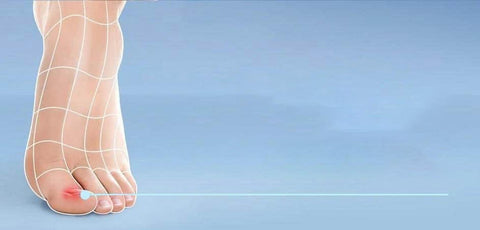What are Fungal Nail Infections?
Fungal infections of toenails and fingernails (also known as onychomycosis, or tinea of the nails) can cause nails to develop patches of white, black or yellow discolouration.1–3 Around 10% of the general population suffers from fungal nail infections, but this increases with age to 50% in those over 70 years of age.1
What Causes Fungal Nail Infections?
Fungal infections of the nail are most commonly caused by dermatophytes (a type of fungus).1,3 Although not as common, fungal nail infections can also be caused by other types of fungi (e.g. yeasts). When a fungal nail infection is caused by a dermatophyte, the condition is specifically known as tinea unguium.3
What Are the Signs of Fingernail Infection?
Fungal nail infections can present in many different ways depending on the spread and cause of the infection.3
Mild fungal infections of toenails and fingernails cause discolouration of the nail. Hallmarks of fungal infections are the nail becoming crumbly and forming distinctive yellow spikes.3 Toenails are around seven times more likely to be affected than fingernails due to slower nail growth, less blood supply, and the amount of time spent in dark and moist environments .1,3 Fungal infections may affect only a single nail or, in extreme cases, all nails.3
There’s a wide range of symptoms associated with fungal nail infections. Here’s a few:4
- Nails start to lift away from the nail bed
- Nails get thicker or crumbly
- Flaking or pitting on the surface of the nail.
How are Fungal Nail Infections Treated?
There are a range of oral (taken by mouth) and topical (applied directly to the nail) treatments available. Treatments depend on the severity of the infection.1
Topical treatments can be used for mild infections2 and include nail lacquers applied daily to affected nails for several weeks to months.
Scholl Fungal Nail Treatment is a two-step system that has been developed to help treat mild fungal nail infections and help prevent the spread of infection. It comes with disposable files to gently remove the top layers of infected nail and an advanced nail liquid developed to penetrate the nail
